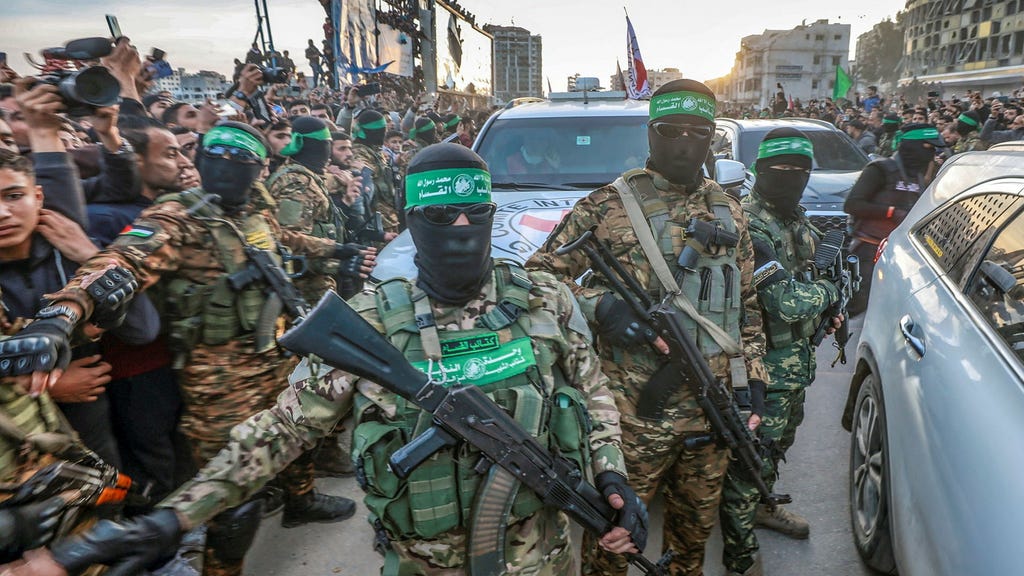The six-week ceasefire between Israel and Hamas, enacted on January 19th, brought a temporary halt to the intense conflict, but not a resolution. While Israel insisted the pause was solely for the release of hostages, Hamas seized the opportunity to publicly declare victory, parading armed militants through the streets of Gaza. This display of force, particularly during the hostage release on January 25th, where Hamas fighters stood alongside members of the Qassam Brigades and Palestinian Islamic Jihad’s al-Quds Brigade, served as a powerful symbolic act, defying Israel’s stated goal of annihilating the organization. The true extent of Hamas’s losses, disputed by both sides, remains uncertain, adding to the tense atmosphere.
Hamas’s post-ceasefire actions have raised concerns among the populace in Gaza. Reports indicate the deployment of 6,000 police officers throughout the region, furthering the projection of control and power. While Hamas has announced intentions to reopen schools, their actions have also instilled fear. A video circulating on Telegram, purportedly showing the execution of alleged Israeli collaborators, serves as a grim reminder of Hamas’s authority and its willingness to use brutal tactics to maintain it. Critics within Gaza fear that the weapons once directed at Israel will now be turned inwards, suppressing dissent and further solidifying Hamas’s grip on the region.
The level of popular support for Hamas in Gaza following the devastating conflict remains a critical question. Pre-war surveys indicated a decline in support for the October 7th attack and for Hamas in general, with a concurrent rise in support for a two-state solution and negotiation. However, the impact of the recent war and ceasefire on public opinion is yet to be determined. Experts note that despite the potential loss of experienced fighters, Hamas appears to have no difficulty recruiting new members, drawing from a pool of angry, traumatized young men who have grown up amidst conflict and are willing to fight.
American intelligence estimates suggest that Hamas has recruited between 10,000 and 15,000 new soldiers since the war began, offsetting their losses, though the exact figures are disputed. This influx of younger, less experienced recruits raises concerns about increased aggression and a potential disregard for civilian lives. While Hamas has historically faced criticism for its administration of civilian services in Gaza, the profound suffering endured by the population contributes to ongoing support for military resistance. The trauma experienced by the people of Gaza, coupled with the destruction of homes and disruption of essential services, fuels a sense of desperation and vulnerability.
The current leadership structure within Hamas remains opaque, with many key figures believed to have been killed during the conflict. This internal reshuffling adds another layer of complexity to the situation, making it difficult to predict the organization’s future trajectory. Despite the challenges Hamas faces, its entrenched position within the community makes its eradication highly unlikely, according to experts. A political solution is deemed essential to address the underlying issues fueling the conflict and prevent the resurgence of Hamas or similar groups.
The ceasefire, while offering a respite from violence, presents a precarious and uncertain future for Gaza. Hamas’s public displays of strength and control, coupled with reports of internal executions and the recruitment of new fighters, suggest a continued commitment to armed resistance. The widespread devastation and trauma experienced by the population, combined with the lack of a clear political path forward, create a fertile ground for continued instability and conflict. While Hamas’s ultimate fate remains uncertain, the possibility of achieving Israel’s goal of eliminating the organization appears increasingly remote without a comprehensive political resolution that addresses the root causes of the conflict.














